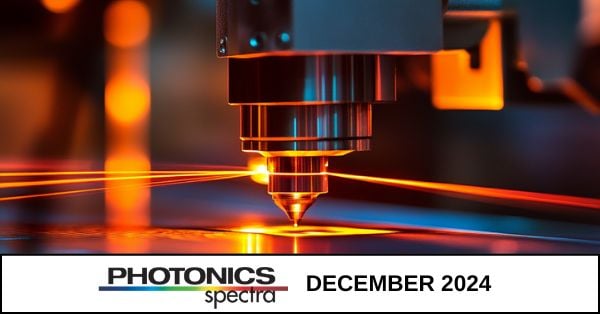Sep. 27, 2024

Beam Measurement
The applications for lasers are constantly expanding, and with that, so too is the need to monitor these lasers to ensure that there is not a drop-off in performance. Beam profiling is an integral facet of monitoring the laser, providing users with detailed information about the power, shape, and energy of the beam. Still, efforts to evaluate high-power or tiny on chip lasers using common techniques often do not yield a complete picture: Current solutions for laser beam profiling are often big and bulky. Now, a new 'quantum toolset' could provide a better understanding of these lasers on the extreme ends of the spectrum.
Key Technologies: Laser beam profiling, quantum computations
Gas Sensing
IR sensing is an essential resource for efficient, highly precise detections of greenhouse gases and other toxins that cloud the air we breathe. Laser absorption spectroscopy, a principal technology for this purpose, is an effective technique to improve data collection efforts and help identify leaks, and even enable regulatory compliance in an age of heightened legislation and regulations. Combined with advances in connected sensor networks, industries now have all the tools needed to begin investing in a more sustainable future. This article outlines the implementation of LAS for gas sensing and detection, overviewing the technique and exploring the role of IR filters and thin-film coatings in optimizing LAS deployments.
Key Technologies: Laser absorption spectroscopy, gas sensing (general), IR sensors, IR spectroscopy, IR filters, thin-film coatings,
Laser Texturing
From improved shoe grip and stronger glue adhesion, to aesthetically-pleasing cell phone frames and attractive automotive light displays, the effects of laser texturing extend across sectors. The application of this industrial laser process to different types of materials (plastics, composites, and glasses), and in adopting different laser parameters, can lead to vastly different outcomes. Laser patterning, including of ceramic materials, is another process that poses distinct challenges. Industry solutions, best-practices, and applications -- all driven by continuously-improving laser technology -- are spotlighted. Methods and techniques including direct laser interference patterning, laser surface texturing, laser ablation, and direct laser writing are among those examined in-depth. Future challenges posed by evolving applications and material properties are also discussed.
Key Technologies: Laser texturing, laser patterning, laser ablation, femtosecond laser material processing, CO2 laser materials processing, MOPA fiber laser materials processing, displays manufacturing, UV femtosecond lasers, polymer/glass/ceramic materials processing
Metallic Coatings
The evolution of metallic coatings has revolutionized the design and application of mirrors, providing greater control over reflectivity, durability, and environmental resistance. Different types of metallic coatings — whether aluminum, silver, nickel, or gold — offer their own set of strengths and challenges. For manufacturers, carefully selecting and enhancing these materials serves to expand the range of applications for mirrors, from high-precision scientific instruments to commercial products and beyond. And, as industries like telecommunications, aerospace, and medical imaging continue to grow, the demand for highly specialized optical coatings will only increase. The ability to engineer coatings that meet specific optical requirements is becoming a decisive factor in determining the success of mirror manufacturers. Considerations of the manufacture of these coatings include nanotechnology and chemical modifications, as well as innovative fabrication techniques.
Key Technologies: Metallic mirror coatings, metallic coatings, physical vapor deposition, chemical vapor deposition, reflective optics, optics manufacturing, metallic coatings with dielectric overcoats
Industry Insights: Society for Information Display (SID)
Through the lens of Achin Bhowmik, president of SID, the evolution of display technology -- from early televisions based on cathode-ray tubes in the mid-20th century, to sophisticated liquid crystal displays and OLED screens. A look at the evolutionary nature of display technology informs the significance of, as well as emerging applications for new technologies including micro-LED displays and AR/VR devices, as well as continuously-improving technologies like LCD, LED, and OLED screens. The role of SID is explored, as an industry body fostering innovations and enabling progress in the shift from visual interfaces to interactive technologies.
Key Technologies: Displays, LCDs, OLEDs, AR/VR Displays, Micro-LEDs
Download Media Planner